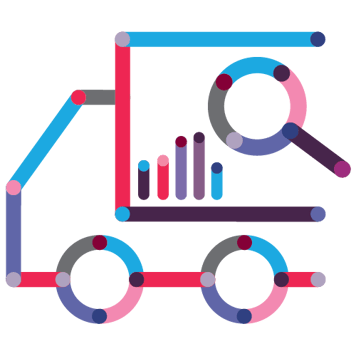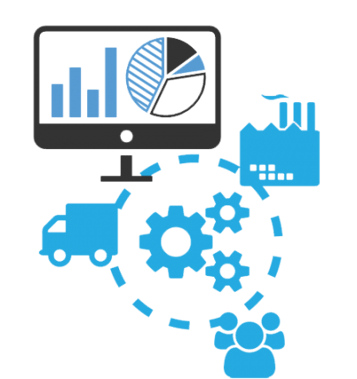REDWOOD LOGIN
Redwood PortalLTL
SCS
SCS Support
Rockfarm
As technology continues to improve our ability to gather data in near real-time, businesses are left with the task of figuring out how to leverage this data and apply it to intelligent business decisions. At times this can feel like an overwhelming task, with data coming in at faster rates and in higher volumes than ever before. However, with the proper supply chain analytic systems in place, you’ll be able to use this data to create value that sets your company on the path of continued success.

Everything from up-to-the-minute inventory data that shows subtle shifts in customer purchasing patterns to weather condition tracking for optimized shipping routes and customer social media reporting all contribute to the status of your supply chain. And the most successful business of the future will be able to analyze and react quickly to data coming in, determining what is relevant, and how it can make the most immediate positive contributions to your overall business goals.
This ability to analyze an ever growing amount of data has come hand in hand with new challenges placed on the supply chain. Businesses face increased customer demand and expectations, the pressure to find ways to set the “perfect price” that entices customers but still allows enough profit for growth, and a need to adapt to an expanding network of suppliers, transporters, and distributors that in some cases have reached a global scale. And without proper supply chain analytics, all these challenges could lead to excess waste of time, fund, and resources in your supply chain.
To ensure that your business continues to thrive in your current industry setting you’ve got to put supply chain analytics to work creating real value. Here’s how you can do that.
Before sophisticated data tracking, suppliers often had the upper hand in business transactions because the companies they were supplying to were blindly dependent on them for getting the materials they needed. However, today’s supply chain analytics allow businesses to track interactions with suppliers (analyze contracts, scrutinize shifts in rates and delivery times, record inconsistencies in quality, etc.), which allows businesses to set benchmarks for their supplies and then evaluate them accordingly on an ongoing basis and make intelligent decisions. These decisions could include whether it’s time to renegotiate a contract if prices appear to be rising at a faster rate than expected, whether you need to reconsider the lead times you require from a shipper, of even if you need to find a different supplier because of poor performance.
With supply chain analytics you won’t need to settle for a supplier. Instead, you’ll be able to have an equal weight in the relationship and make sure the partnership is providing you with quality service that is cost effective.

At the heart of the supply chain is the product a business is supplying to its customers. And where does that product reside after production but before distribution? In your inventory—or physically in your warehouse. As most businesses know, finding the proper balance between not enough inventory to meet customer demand and too much inventory that leads to waste requires sufficient data. Fortunately, supply chain analytics provide specific and real-time information about your inventory, such as what items you need to reorder, when to reorder them based on historical lead times, small increases in demand for particular items, quality control issues (like if refrigerated items suddenly exceed a safe temperature) and more.
These analytics allow you to have a much leaner approach to managing your inventory that reduces wasted resources and improves the ability to meet consumer demand and reduce overhead costs. This is of particular importance if you can apply analytics to make predictive business decisions that proactively avoid inventory issues (like back orders) instead of reacting to them when they happen, which can often lead to extra expenses that take away from your overall profits.
Much like with suppliers, businesses can use supply chain analytics to ensure that their transportation network is operating at optimal efficiency in terms of cost, delivery times, and quality of delivery. Today’s transporters typically have vehicles equipped with systems that track minute details of a delivery from road conditions and driver speed to vehicle maintenance and exact time of delivery. Plus, analytics systems will help you capture the details of your business partnerships with transportation companies in terms of rates, the percentage of on time delivery, etc. This data ensures you have the visibility you need to make intelligent decisions regarding the shippers you use, your shipping methods (like LTL), and your shipment times.
By analyzing data about your transportation network you are better able to negotiate fair shipping rates that allow you the flexibility to dedicate resources back into the business or provide customers with reduced or free shipping costs.
Supply chain analytics are a powerful tool when utilized properly. They can ensure that businesses operate at maximum efficiency, saving time, resources and money. Plus, analytics make it easier to maintain mutually beneficial relationships within your supplier and transportation networks, which provides additional cost savings. Here at LTX Solutions, we pride ourselves on providing customized and innovative solutions to ensure you are capturing all of the data you need to make the best business decisions. Contact us today to learn more!